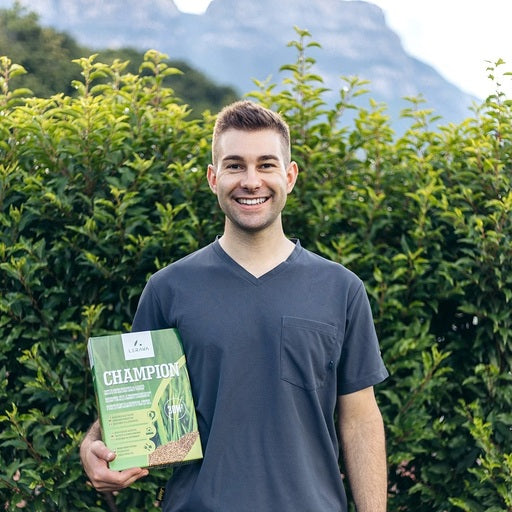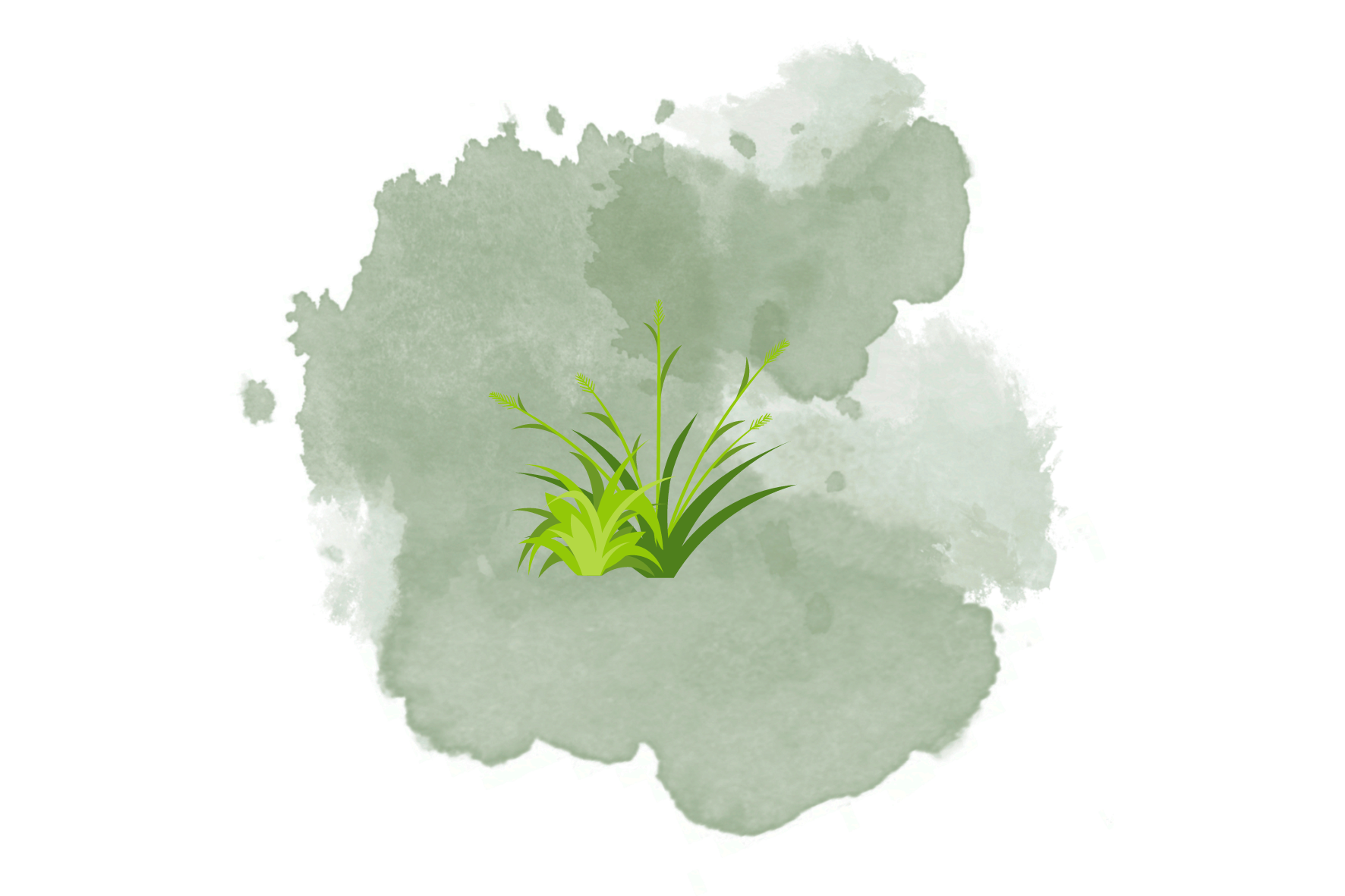Lawn diseases
Most common lawn diseases
The most common lawn diseases are dollar spot, snow mold, rust, red tip, and root rot.
How to recognize diseases in the lawn?
Depending on the disease, different symptoms/optical changes occur. In most cases, diseases can be recognized by discolorations of different sizes. We will elaborate on the details below.
Dollar spot
Dollar spot can be recognized by the pale spots, about 1-3 cm in size. In the morning, when there is dew, they usually have a white mycelium.

Causes are high temperatures of 25-30°C and cool nights with dew formation. Also soil dryness and lack of nutrients.
It is prevented/controlled with sufficient nutrient supply in summer and avoiding drought stress even on partial areas. Watering should be abundant, but not in the evening. Lawn thatch is removed by scarification.
Snow mold
 Recognizable by gray/brown moist patches, mostly rotten, ranging in size from 5 to 25 cm. Marginal areas are usually brown and have gray or pink mycelium.
Recognizable by gray/brown moist patches, mostly rotten, ranging in size from 5 to 25 cm. Marginal areas are usually brown and have gray or pink mycelium.
The causes are low temperatures (0-8 °C) and high humidity. As the name suggests, it occurs mainly under snow cover.
It is prevented/controlled by avoiding water stagnation and high humidity. Timely scarification and sanding for sufficient aeration and autumn fertilization with calcium and magnesium as needed.
Rust
Lawn rust can be recognized by the yellow-brown or black pustules on the leaves, yellow nests, and dusty spread of spores.

The causes are persistent hot weather at 20-30°C and nutrient and water deficiency.
It is prevented/controlled by even nutrient supply (fertilization), good aeration, and reducing shade plants. Always keep the soil sufficiently moist, while the grass should dry out as quickly as possible (water in the morning).
Root rot
Root rot can be recognized by dark, brown, irregular spots. The grasses appear slimy and rotten, and the roots are brown and destroyed and can be easily pulled out.

It often occurs in new plants or reseedings. It attacks weakened grasses after drought, with persistent moisture and waterlogging. In addition, nutrient deficiencies and a very low pH value promote infestation.
It is prevented/controlled by reducing moisture and ensuring good aeration by scarification or aeration. Sufficient nutrient supply is also important.
Weeds
The most common weeds are dandelion and clover.
Dandelion
Dandelion is controlled by cutting the flower, stinging it or destroying it: chemical means, pets (rabbits, guinea pigs, chickens). If the lawn is completely overgrown, you can remove the last 30-50 cm of soil and completely rid it of all root parts.

To prevent the spread of dandelion, do not scarify the lawn. Dandelion seeds can take root particularly well in cracks. Mow your lawn regularly, and when you fertilize be careful not to overdo the nitrogen. Scatter new lawn seeds in bare areas of the lawn.
Clover
Clover is controlled by scarification, herbicide or cover crops. Clover cannot grow in low light conditions and dies.


![#Taglia_1.7kg [sku-A0291] [lang-IT] [lang-EN]](http://lerava.com/cdn/shop/files/Cessione_IT.png?v=1749635507&width=2000)





